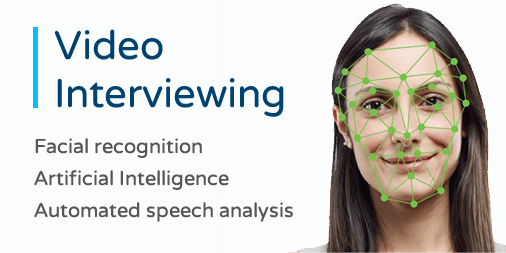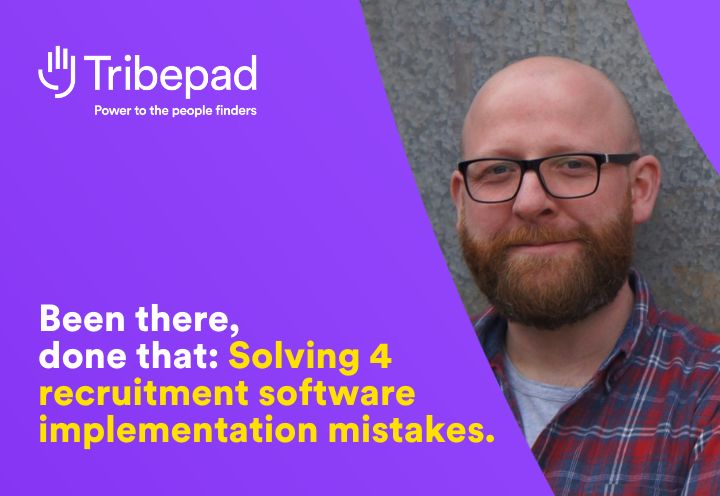When you think of video interviewing, you probably imagine a chat over Skype, Hangouts, FaceTime or some other video conferencing platform. It’s an efficient way to give somebody a ‘face-to-face’ interview when they’re not actually there, right? The thing is, there’s a lot more to video interviewing than meets the eye, and many recruiters are missing a trick with the technology that’s now available.
Perhaps video interviewing should be called ‘virtual interviewing’ to set it apart from the idea that it’s nothing more than a simple conference call. Imagine the advantages of being able to auto-transcribe an interviewee’s answers, or better, being able to automatically assess and filter them based on the keywords they use. It could be an incredibly effective way to whittle down a large group of candidates in preparation for a true face-to-face. For recruitment agencies and HR departments, the time-saving potential is enormous.
So what’s stopping more recruitment agencies from picking up video interviewing and using it as a tool? Whether recruiters choose to lean heavily on it, or simply use it to supplement their usual workflow, it’s surprising that the industry hasn’t embraced it as fully as it could.
What can video interviewing offer that a F2F interview can’t?
This is a key question. Almost everyone would agree that in most cases a face to face interview is preferable over speaking to somebody via video chat. It really comes back to this idea that a video interview is just that – a video chat. So what sets it apart? What makes it more valuable?
For starters, facial recognition technology has grown incredibly sophisticated, allowing video interviewers to determine a candidate’s mood and posture. Are they pessimistic? Optimistic? Overly nervous? You may decide to split the video and audio tracks to analyse each individually, paying attention to body language and their focus on certain words and phrases. If this goes too far down the analytical route, you could even use auto-transcription technology to make interviewing ‘blind’, eliminating the current problematic issue of subconscious bias. Recruiters could use these tools to efficiently scope out the best candidates and then present them ‘blindly’ to the employers to avoid any kind of discrimination.
What’s more, video interviewing completely negates the need for travel on the candidate’s part. This could potentially give recruiters a wider pool to choose from – candidates that are not based locally (but are willing to move for the right job) may be more inclined to apply if they don’t have to sit on a train for hours just to get through the first couple of stages of the application. Many recruitment processes get around this by having a telephone interview, but the problem with this is that it can’t be easily recorded, analysed or shared. Not only would a video interview be easy to share, with the right software it could automatically rank candidates based on customisable algorithms.
The difference is in the software
A video interview is just a conference call without the right software and process in place. Applicant Tracking Systems (ATS) can be used to optimise video interviews and glean more insight. We’ve mentioned facial recognition, behavioural analysis, recording, and candidate ranking, but how does all of this fit together?

If you’re recruiting for a role in a niche field, it’s common to create questions that are geared to elicit particular responses from candidates. To track this, you may come up with a list of priority keywords that you’d expect the ideal candidate to say in an answer to a given question. An ATS can then ‘listen’ for these keywords across tens or even hundreds of interviews, and ‘score’ a candidate’s responses automatically. This means that when the recruiter comes to do further research or even arrange a final F2F, they’re far more likely to have a shortlist of not only relevant but highly suitable candidates.
These technologies exist and technically, it is possible; all you need is a platform that elegantly links all the elements together to deliver seamless and valuable insight.
What might the future hold for video interviewing?
We’re already involved in the next steps – analysis of personality traits, and even predictive analysis to determine how far a candidate might go in terms of salary based on existing candidate profiles. The interview process will become more streamlined and more efficient, and candidates that ‘pass’ the process can be indexed and put forward for other relevant positions if they’re not successful. Gone will be the days of finding dusty CVs online and contacting the candidate in the hope they might be available – instead, video interviewing will allow recruiters to build more sophisticated databases which will likely save everybody time, and money, in the long term.



